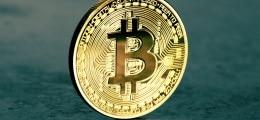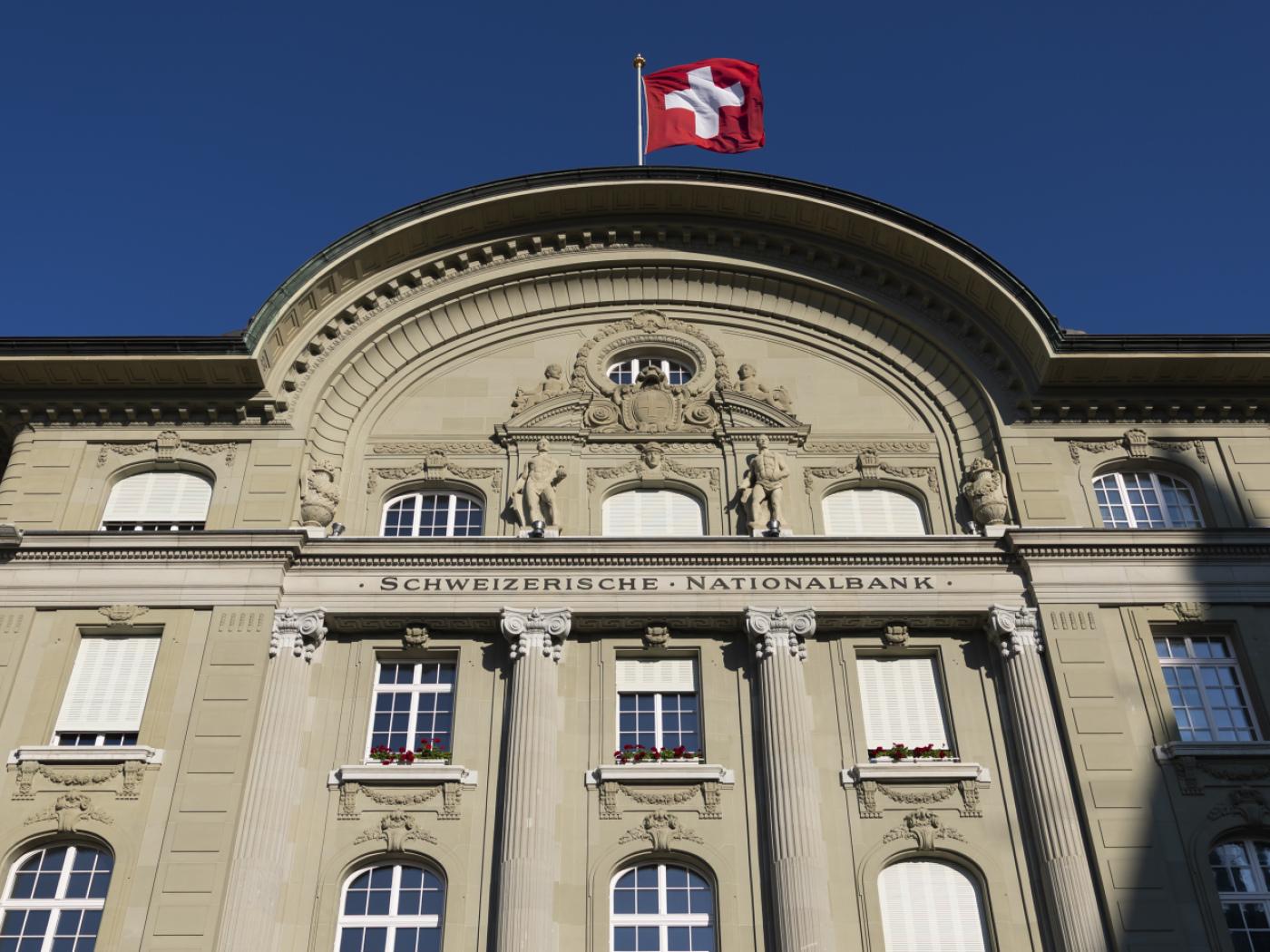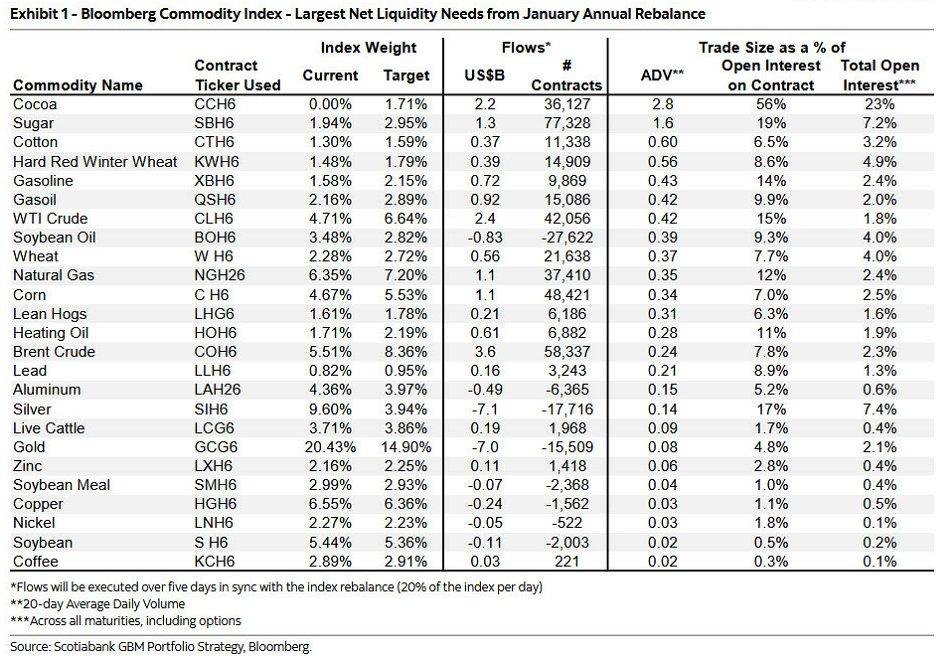The market got caught leaning the wrong way. The weakness in April's high-frequency US data encouraged participants to push the US two-year yield to its recent floor near 4.70% and took the 10-year yield to two-month lows, slightly above 4.25%. The Dollar Index was driven below the uptrend line drawn off the December 2023 and March and May 2024 lows. We have argued that while the US economy is slowing, the April data seemed to overstate the case, and the May jobs data will likely set the broad tone of other real sector data. The Atlanta Fed's GDP tracker had slipped to 1.8% as of June 3. But between last Thursday and Friday's data, the tracker for Q2 GDP finished the week at 3.1%. US rates jumped (The two-year settled near 4.88% and the 10-year ~4.43%) and the dollar recovered broadly with DXY moving back above the trendline. In emerging markets, the election results in South Africa, India, and Mexico generated volatility. At the end of the week, the rand and rupee were little changed, but the peso extended its dramatic losses as longs were abandoned, taking the peso down around 7.3% on the week to seven-month lows.
The week ahead features the FOMC and BOJ meetings. The Federal Reserve will not change policy will change its forecasts. We suspect that the median dot will fall from three cuts to less than two. A hawkish hold? The case for the BOJ to hike in July, which the market is discounting, applies equally well to this meeting. However, at most the BOJ will lay the groundwork for the July move and it could announce plans to reduce its bond purchases (QE) from the current JPY6 trillion a month (~$38.5 bln). The 10-year JGB yield fell 10 bp last week, the largest weekly decline of the year, which is not what one would expect if QE were going to be tapered. Still, with the jump in US rates before the weekend, the JGB yields are set to rise at the start of the new week. The May CPI, due a several hours before the FOMC meeting concludes may show a small month-over-month increase (~0.1%) but the year-over-year rate will be little changed but for the rounding. China reports its CPI and PPI. Disinflationary forces appear to be easing. The results of the European Parliament election will be sliced and diced to see implications for national politics as well as the composition of the new EC, which is unlikely to be decided before the end of the month.
United States: Two of the most market-sensitive events take place within a few hours of each other on June 12. CPI and the FOMC meeting. The median forecast in Bloomberg's survey is for a 0.1% increase in May's CPI. That would be the lowest monthly increase since last October. If accurate, it brings the three-month annualized rate to 3.2%, down from 4.4% previously., and the six-month annualized rate, which some Fed officials have cited, at 3.4%. Notably, given the 0.1% increase in May 2023, the year over-year rate may be unchanged at 3.4%. The core measure is expected to have risen by 0.3%, the same as in April, but given the base effect, the year-over-year rate may ease to 3.5% from 3.6%. It would put three-month annualized rate at 4% down from 4.4% previously, and the six-month rate at 4.2%. The base effect may be make easier comparisons in Q3 but more difficult in Q4, which is where rate cut expectations persist. The takeaway is that barring a surprise, the data are unlikely to materially change the view of investors or policymakers. The FOMC meetings concludes a few hours later. The Fed funds futures have not had a cut fully discounted for this week's meeting since late February. It has not had even a 50% chance of a cut priced in since before the March CPI was reported on April 10. The Fed funds futures do not have a cut fully discounted until the December meeting, though there is about an 80% chance of a cut in November and almost a 55% chance of a cut in September.
The 272k increase in May nonfarm payrolls was more than expected and above the January-April average (~242k). Even though the unemployment rate ticked up (4.0% from 3.9%), the data is sufficiently robust for the Fed to continue to focus on its other mandate, price stability. While a change of rates is not in the cards, the Fed will update its Summary of Economic Projections. The median Fed forecast in March was for 2.1% growth this year. This is on the low side, compared with the IMF (2.7%), OECD (2.6%), and the median forecast in Bloomberg's latest monthly survey (May 24, 2.4%). The Fed's median projection for the PCE deflator was 2.6% and 2.8% for the core rate. This seems high given that the April readings were 2.7% and 2.8%. The Fed was split 10-9 in March between three and more cuts and two or fewer. We suspect that Chair Powell was the "tiebreaker." The subsequent data and Fed comments suggest an important shift took place. The more dovish participants have capitulated, and the more hawkish participants may feel emboldened. We suspect that the new median dot may be closer to one cut this year than two.
The Dollar Index had violated the uptrend line from the end of last year at the start of the last week and remained below it until the stronger than expected US jobs growth sent rates and the greenback higher. The Dollar Index settled above the trendline which came in near 104.60. Initial resistance is seen in the 105.00-25 area.
Japan: The swaps market is pricing in the likelihood10 bp hike by the of Japan in in July (70% chance). A case can be made for a hike at the conclusion of this week's meeting on June 14. The economy is recovering from the contraction in the first quarter. Subsidies for household energy consumption are ending. Income tax cuts will be implement this month. The MOF decision to intervene in the foreign exchange market recently did catch many by surprise, especially the intervention a couple of hours after the last FOMC meeting, but the Bank of Japan under Governor Ueda's leadership has not surprised. Perhaps it is part of his effort to normalize monetary policy. The BOJ could slow its JGB purchases, and officials have suggested this was a possible next step in the normalization of monetary policy. Yet, JGB yields fell last week, which seems contrary to tapering QE. Other central banks sometimes seem to delight in surprising the market, and if it were another central bank, the odds of a hike now would be higher. On a trade-weighted basis the yen is near the lowest since the late April intervention, which itself was the lowest in more than a quarter-of-a-century. According to the OECD's measure of Purchasing Power Parity, the yen is 66% undervalued. That is more than twice the undervaluation that existed before the historic Plaza Agreement in 1985. Japan's current account surplus was almost 4.5% of GDP that year. Last year, it reached 3.6%, near where it was in 2019. Japan reports its April current account on June 10. It nearly always (19 of 20 years) deteriorates in April from March. The March surplus of JPY3.4 trillion appears to be a record. However, next exports shaved 0.3% off Japan's Q1 GDP. Two reasons may help explain why US and Europe have not expressed more concern about the yen's weakness. First, Japan had moved some production offshore, so the yen's weakness is not sparking a surge of exports. Second, China is a more pressing challenge.
The dollar recorded a bullish outside up day against the yen ahead of the weekend by trading on both sides of the previous day's range and closing above it high. Resistance is seen in the JPY157.50-70 area and then around JPY158. Above there, and the market perceives the risk of intervention grows, even though Japanese officials talk about volatility rather than level. One-month implied vol is near 8.8%. In late April it was closer to 12.4%. Dollar support in the JPY154.50-JPY155 area.
China: China reports May CPI and PPI on June 12. Deflationary forces appear to be ebbing. Producer prices are still falling on a year-over-year basis, to be sure, but the pace is clearly slowing. Producer prices have been falling the end of Q3 22. The pressure peaked last June with prices 5.4% lower year-over-year. In April, they were off 2.5% (-3.6% April 2023). Consumer prices fell on a year-over-year basis in the last three months of 2023 and in January 2024, but have since risen albeit slightly and irregularly. In April, of the main components of CPI were all positive but food (alcohol and tobacco). Excluding food, China's CPI rose 0.9% in April. Consumer goods were second weakest category. Prices were flat year-over-year. While demand appears soft, judging from the sluggish growth in retail sales, the lack of price pressure in consumer goods also reflect China's industrial structure and the fierce competition in numerous sectors as local government support their local producer leading to what ruinous competition and excess capacity. The US dealt with similar issues and the price of rationalizing industry (reducing excess capacity) has been oligopolies.
The jump in US rates and the dollar, especially against the yen, warns of downside pressure on the yuan to start the new week. The greenback has held below CNY7.25, but this level may yield, allowing it to re-enter the old range of CNY7.25-CNY7.30. Against the offshore yuan, the dollar looks poised to test CNH7.2750. The high for the year was recorded in mid-April near CNH7.2830. Last year's high was closer to CNH7.3680.
Eurozone: After contracting in H2 23, the eurozone economy is recovering. It expanded by 0.3% in Q1 and is seen growing by around 0.2% this quarter. Industrial output is expected to have risen for the third consecutive month in April, which, if true, would be the longest advance since the end of 2021. Meanwhile, the eurozone has mostly recovered from the terms of trade shock and the disruption spurred by Russia's invasion of Ukraine. The current account as a percentage of GDP peaked in 2017, slightly above 3%, and was about 2.4% on the eve of the pandemic. It had recovered to 2.8% in 2021 and then collapsed to -0.6% in 2022. It returned to surplus last year (~1.7%) and is expected be around 2% this year. While the market participants monitor the incoming data, there will be a watchful eye on the jockeying for position and horse-trading following the European Parliament elections that will lead to a new European Commission.
The euro fell from the top of its recent range, slightly above $1.09 to the lower end of its range below $1.0820 in response to the stronger than expected jobs growth and the jump in US rates. We have been looking for the euro to turn down after rallying from $1.06 in mid-April, but it had been resilient in the face of the ECB's rate cut as US rates fell faster. The US two-year premium over Germany fell from a little above 190 bp in late May to below 170 bp before US employment report, the lowest in about two months. The US premium rose almost nine basis points ahead of the weekend, the largest rise since the March US CPI was reported on April 10. The recovery in the premium coincided with a firmer dollar. Still, the euro needs to take out the $1.0785 area to be significant from a technical perspective. Not to get too far ahead but such a break could signal another cent pullback in the euro.
United Kingdom: The UK economy also has recovered from the contraction in H2 23. The monthly GDP prints in Q1 summed to 0.9% after -0.8% in H2 23. Still the quarterly GDP was 0.6% in Q1 24 after a flat Q2 23, -0.1% in Q3 and -0.3% in Q4 23. The UK reports April GDP and its details in the middle of the week. Survey data gives little reason not to expect a continued recovery, even if slower than in the first quarter. The day before the GDP data, the UK reports April/May employment figures, and wages. Expectations for the Bank of England are sensitive to the wage data. Average weekly earnings (three-month average year-over-year) have been steady in the four months through March, average 5.7%. They peaked last July at 8.5%. Still, after the firmer than expected CPI in late May, the market has pushed out the first rate cut until November, though there is almost a 66% chance of a cut discounted for September.
We have been looking for a near-term top in sterling after rallying five cents off the April lows. Sterling, like the euro, went into the US jobs report near the upper end of its range ($1.2800+). The bulls seemed struggling. Sterling pushed above $1.28 several times in the past two weeks but it did not spur follow-through buying. It was tagged for nearly a cent in response to the US employment data and briefly traded through its 20-day moving average for the first time in nearly a month (~$1.2720). Still, it held above the week's low, which was set last Monday a little below $1.2700. Even then, we suspect that only a push of the $1.2675 area would confirm a downside break. The next support area may be $1.2620-30, and then maybe closer to $1.2550.
Australia: The employment report on June 13 is the last high-frequency data point ahead of the central bank meeting on June 19. The Australian labor market is expanding at about the same pace as early last year. Consider that Australian employment has risen by an average of 40.6k a month through April this year and almost 35k in the first four months of 2023. Full-time positions have grown by an average of almost 30k a month this year compared with about 26.5k in Jan-Apr 2023 period. Yet, the unemployment rate has risen to 4.1% from 3.7% last April. About half of the increase represents a greater participation rate (66.7% vs 66.5% last year). Essentially, job creation is not keeping pace with the increase in the workforce. Expectations for an RBA rate cut are building. The futures market is discounting about a 50% chance of a cut this year, up from less than 10% a week ago.
The US dollar's rally after the jobs report pushed the Australian dollar to its lowest level since mid-May, near $0.6580. It had been confined on a closing basis between $0.6600 and $0.6700 for nearly a month. It settled near $0.6590 ahead of the weekend. We suspect there is near-term potential toward $0.6540, and possibly $0.6500. Still, some caution maybe in order. At the start of last week, the Aussie was pushing against its upper Bollinger Band and finished the week fraying the lower one.
Canada: Following the central bank meeting and the employment report before the weekend, the week ahead turns quiet for Canadian economic information. Still, the Canadian dollar often seems to be driven by external events, like the risk appetite and broad direction of the dollar. The Bank of Canada before the first G7 central bank to cut rates in this cycle. It was clear too what would get it to move again, namely moderating price pressures. The swaps market was pricing in a little more than two cuts this year at the end of last month. The central bank cut, and the market is still strongly has two cuts still discounted. The May jobs report was disappointing. After gaining 40k full-time posts in April, it lost almost 36k in May. The unemployment rate edged up to 6.2% from 6.1%, even though the participation rate was steady at 65.4%. The one possible yellow flag to Bank of Canada officials is the rise in hourly wages for permanent employees (5.2% vs. 4.8%). However, the key is the actual inflation data, and the May CPI is not out until June 25. The swaps market has almost a 60% chance of a cut in July, but that seems too high.
The US dollar rose to its best level since May 8 against the Canadian dollar, pushing to almost CAD1.3770. It was the first close above CAD1.3750 since mid-April. Chart resistance is seen in the CAD1.3785-CAD1.3800 area. A run toward the year's high near CAD1.3845 cannot be ruled out. A note of caution comes from the Bollinger Band, as the greenback settled above the upper band (~CAD1.3740). Initial support maybe around CAD1.3720.
Mexico: To much of a good thing turned into a rout on the Mexican peso last week. Sheinbaum was far ahead in the polls, so her victory was not the issue. The problem for investors and market participants is that the Morena party and allies secured a sufficiently large majority that changes to the constitution may be possible. Before the election, some were concerned about what AMLO does in his last days in office, between the time the legislators are seated in September and when Sheinbaum is inaugurated on October 1. One of the changes that AMLO has advocated is the popular election of Supreme Court judges. The Supreme Court and central bank have been thought of as "guardrails" by investors, checks on some of the changes the populist and popular president advocated. Indeed, press reports suggest that constitutional reforms will be discussed in September. These developments may have weighed on the peso in any event, but what contributed to such a dramatic reaction was market positioning. Industry surveys showed asset managers were overweight Mexico and speculators (non-commercials) in the futures market held nearly the largest long peso position in several years. Although May CPI was softer than expected, the depreciation of the peso reinforces the sense that Banxico is on hold when it meets on June 27. The swaps market has about 40 bp of cuts discounted in H2 24.
The peso fell 7% against the dollar last week. Outside of pandemic, this was the largest decline since the Great Financial Crisis in October 2008 that saw Lehman toppled. Ahead of the weekend, the dollar rose to almost MXN18.43, and took out April's "flash crash" high (~MXN18.2140). Last October, the dollar formed a cap in front of MXN18.50. If that is taken out, there is little in the way of MXN19.00, which it has not been above since March 2023. The MXN18.00 area may offer support.
Tags: Featured,macro,newsletter




























